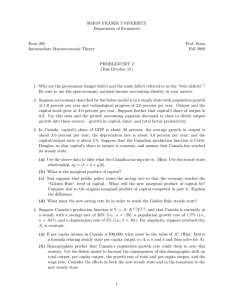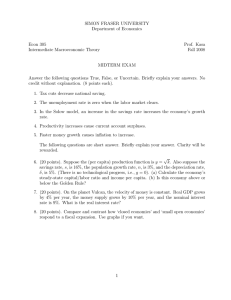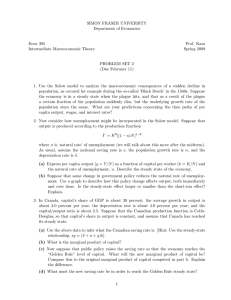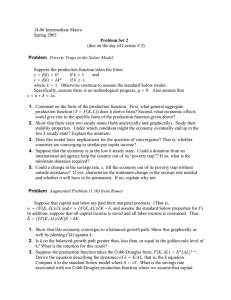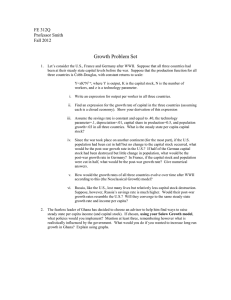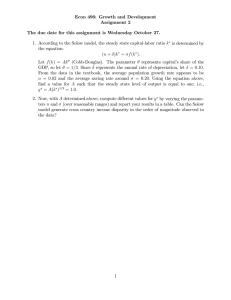SIMON FRASER UNIVERSITY Department of Economics Econ 305 Prof. Kasa
advertisement
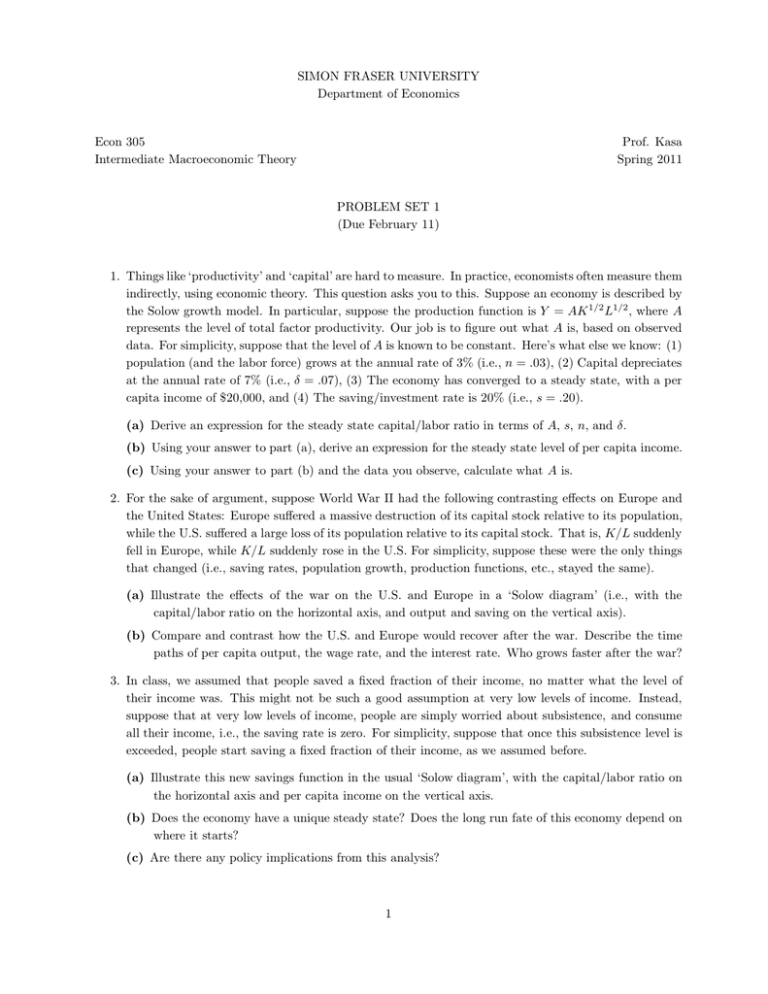
SIMON FRASER UNIVERSITY Department of Economics Econ 305 Intermediate Macroeconomic Theory Prof. Kasa Spring 2011 PROBLEM SET 1 (Due February 11) 1. Things like ‘productivity’ and ‘capital’ are hard to measure. In practice, economists often measure them indirectly, using economic theory. This question asks you to this. Suppose an economy is described by the Solow growth model. In particular, suppose the production function is Y = AK 1/2 L1/2, where A represents the level of total factor productivity. Our job is to figure out what A is, based on observed data. For simplicity, suppose that the level of A is known to be constant. Here’s what else we know: (1) population (and the labor force) grows at the annual rate of 3% (i.e., n = .03), (2) Capital depreciates at the annual rate of 7% (i.e., δ = .07), (3) The economy has converged to a steady state, with a per capita income of $20,000, and (4) The saving/investment rate is 20% (i.e., s = .20). (a) Derive an expression for the steady state capital/labor ratio in terms of A, s, n, and δ. (b) Using your answer to part (a), derive an expression for the steady state level of per capita income. (c) Using your answer to part (b) and the data you observe, calculate what A is. 2. For the sake of argument, suppose World War II had the following contrasting effects on Europe and the United States: Europe suffered a massive destruction of its capital stock relative to its population, while the U.S. suffered a large loss of its population relative to its capital stock. That is, K/L suddenly fell in Europe, while K/L suddenly rose in the U.S. For simplicity, suppose these were the only things that changed (i.e., saving rates, population growth, production functions, etc., stayed the same). (a) Illustrate the effects of the war on the U.S. and Europe in a ‘Solow diagram’ (i.e., with the capital/labor ratio on the horizontal axis, and output and saving on the vertical axis). (b) Compare and contrast how the U.S. and Europe would recover after the war. Describe the time paths of per capita output, the wage rate, and the interest rate. Who grows faster after the war? 3. In class, we assumed that people saved a fixed fraction of their income, no matter what the level of their income was. This might not be such a good assumption at very low levels of income. Instead, suppose that at very low levels of income, people are simply worried about subsistence, and consume all their income, i.e., the saving rate is zero. For simplicity, suppose that once this subsistence level is exceeded, people start saving a fixed fraction of their income, as we assumed before. (a) Illustrate this new savings function in the usual ‘Solow diagram’, with the capital/labor ratio on the horizontal axis and per capita income on the vertical axis. (b) Does the economy have a unique steady state? Does the long run fate of this economy depend on where it starts? (c) Are there any policy implications from this analysis? 1
